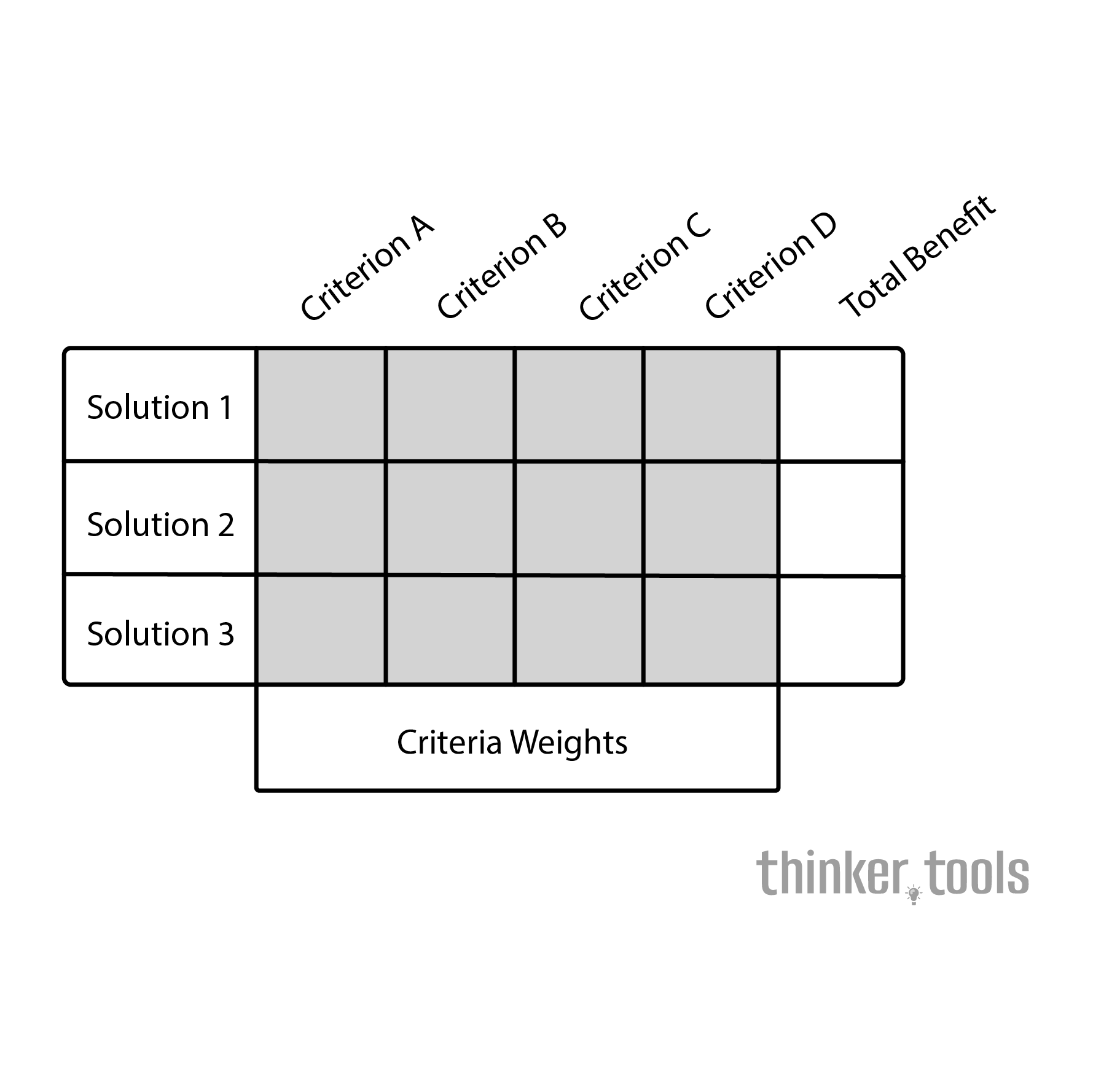
What is a Decision Matrix?
A Decision Matrix is a tool that helps you evaluate and prioritize options by scoring them against a set of weighted criteria. It transforms subjective preferences into objective scores, allowing you to compare options fairly and make decisions based on what truly matters most. Think of it as a scoring system that accounts for all the factors you care about, not just the ones that shout loudest in your mind.
The History and Evolution
The Decision Matrix concept emerged from the field of operations research in the mid-20th century. Stuart Pugh, a British design engineer, popularized a version in the 1980s for product development decisions. Since then, variations have been adopted across industries, from NASA's spacecraft design choices to individuals selecting their next career move. Its enduring popularity stems from its ability to bring structure to complex decisions while remaining flexible enough to accommodate any situation.
How to Use a Decision Matrix Step by Step
1. Define Your Options
List all viable options you're considering. Be comprehensive but realistic—include only options you would genuinely consider.
2. Identify Your Criteria
Brainstorm all factors that matter for this decision. Common categories include:
- Cost/Financial impact
- Time requirements
- Risk level
- Alignment with goals
- Impact on others
- Personal satisfaction
- Long-term potential
3. Weight Your Criteria
Assign importance weights to each criterion on a scale (typically 1-5 or 1-10):
- 5 = Critical importance
- 4 = High importance
- 3 = Moderate importance
- 2 = Low importance
- 1 = Minor consideration
4. Create Your Matrix
Draw a table with:
- Options as columns
- Criteria as rows
- Weight values in the first column after criteria
5. Score Each Option
For each option, score how well it meets each criterion (typically 1-5):
- 5 = Excellent
- 4 = Good
- 3 = Average
- 2 = Below average
- 1 = Poor
6. Calculate Weighted Scores
For each cell: Multiply the criterion weight by the option score For each option: Sum all weighted scores
7. Analyze Results
The option with the highest total score is theoretically your best choice, but also consider:
- Are the scores close? Maybe the top options deserve more investigation
- Does the winner fail any critical criteria?
- Does the result align with your intuition?
Practical Examples
Choosing a New Job: Maria evaluates three job offers:
Criteria (Weight):
- Salary (4)
- Work-life balance (5)
- Growth potential (3)
- Company culture (4)
- Commute (2)
Job A scores: 4,3,5,3,5 → Weighted total: 66 Job B scores: 5,4,3,4,2 → Weighted total: 70 Job C scores: 3,5,4,5,4 → Weighted total: 76
Job C emerges as the best overall fit, even though it doesn't have the highest salary.
Selecting Project Management Software: A team evaluates options:
Criteria (Weight):
- Cost (3)
- Ease of use (5)
- Features (4)
- Integration (5)
- Support (2)
After scoring, they discover that the mid-priced option scores highest overall, balancing functionality with usability better than the premium option.
Advanced Tips
Sensitivity Analysis: Change weights slightly to see if your decision remains stable. If small weight changes dramatically alter the outcome, gather more information about those criteria.
Negative Criteria: Include "deal-breakers" with negative weights to penalize options with unacceptable characteristics.
Group Decisions: Have each stakeholder create their own weights, then average them for a consensus-based matrix.
Benefits and Life Impact
The Decision Matrix transforms decision-making from an emotional roller coaster into a balanced, thoughtful process:
- Reduces bias by forcing systematic evaluation of all options
- Clarifies priorities by requiring you to weight what matters most
- Builds consensus in group decisions through transparent scoring
- Documents reasoning for future reference and learning
- Increases confidence in decisions through thorough analysis
- Saves time in the long run by preventing endless circular debates
Whether choosing between job offers, selecting a place to live, or making strategic business decisions, the Decision Matrix helps ensure your choices reflect your true priorities rather than momentary emotions or incomplete analysis. It doesn't eliminate the need for intuition but rather creates a foundation of objective analysis upon which your intuition can build. By mastering this tool, you'll find yourself making decisions with greater clarity, confidence, and satisfaction.